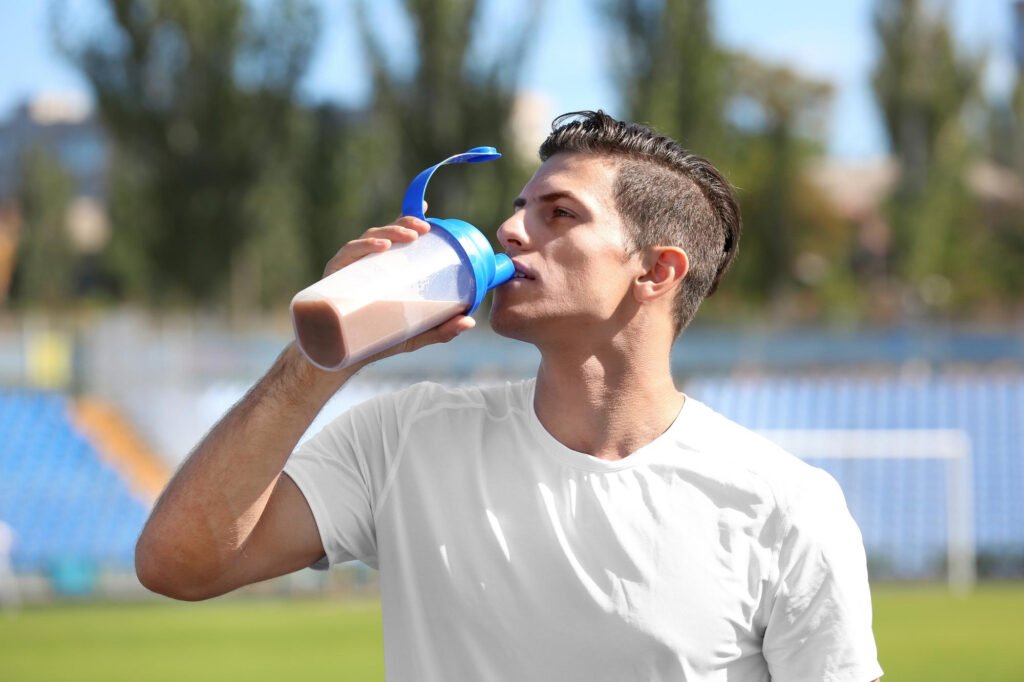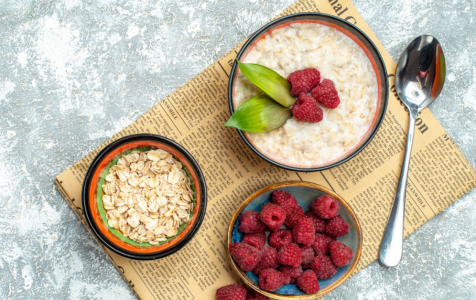What Nutritional Strategies to Bring in Case of Long Runs
Nutrition is as vital as physical endurance when it comes to long-distance running. Though many runners skirt the technique of fuelling within the run, there are those who systematically do meals before and after their runs. Having the right nutrients and taking them at the right times can make the difference between achieving a new personal record and hitting the proverbial wall. The aim of this paper is to offer detailed advice of what foodstuffs to take during long runs with the intention of enhancing the overall performance of the athletes.
Why Eat During a Long Run?
Understanding Your Energy Systems :
For the first hour of the running, most of the energy comes from the muscle glycogen stored in the body, which can be regarded as the immediate glucose source. However, when the run progresses to over an hour, these glycogen reserves begin to dwindle. To sustain this activity, the body uses blood glucose and liver glycogen. When these sources run out and are not replenishing, fatigue will set and performance and even dizziness may occur.
Preventing Energy Crashes
Those who consume carbohydrate in the course of long runs have sufficient blood glucose, therefore postponing fatigue and the maximum performance attenuation. Refueling restores the critical glucogen depletion which is used when fuel is consumed, averting the much feared experience of endurance cyclist known as the “bonk” , or hitting the wall.
Good Strategies on Fueling during Long Runs
Personalized Fueling Strategies
How much one needs to eat while running will depend on several things like:
Body Size: Bigger bodies tend to require more calories taken in.
Run Intensity: Higher intensity at run-burns more calories in an hour.
Duration: The more the running time, the more the fuel required.
An acceptable guideline is to take in 30 to 60 grams of carbohydrates further divided into dosage per hour after the very first hour of running. This is about 120 to 240 calories worth of energy. For ultra endurance events lasting over 2.5 hours, it is probable that you would require up to 90 grams of carbohydrates in an hour on average.
Experiment and Adjust
Every individual in Born to Run (or Love) has his or her differences. Returning to the training, it is periodical to conduct such trials to find what works best for you. A precise account will be necessary, where in addition to what you have consumed, how you have felt should be entered in order to optimize fueling properly.
At What Times in a Long Run should the Food be Consumed?
Timing is Everything
After 30 to 45 minutes into your run, it is necessary to begin the refueling process. After this time and at regular intervals, sugars can again be ingested ranging typically within every 30 to 45 minutes interval. This active (as opposed to passive) strategy counters the risk of steady energy depletion from the start rather than waiting for exhaustion to recover enough to run hard. Likewise, after that Peraku and Levin are fatigue.
Food and Hydration Requirements
Energy products are alone not enough. Some energy products demand water that is an intake that will aid in metabolism of such energy products.
Schedule your intake according to key water stations on the course or carry your own liquids to make sure you do not take gels or chewiest without sufficient liquefaction.
Eating on the Run
Analyzing the Types of Fuel
The main aim is to choose carbohydratesthat are light and inoffensive to the tummy. Here’s an outline of theitems.
Sports Drinks
Pros:
You do not only hydrate, you also take in carbohydrates.
Replenish lost minerals like sodium and potassium due to sweating.
Cons:
Most of them may not be sufficient sources of carbohydrates alone.
If too much is consumed, then the consumer may have an upset stomach.
Hints:
Keep an eye out for drinks that contain 6-8% carbohydrate for better efficacy.
Brands such as Gatorade or Powerade are common ones that one can find.
Energy Gels and Chews
Pros:
Does not take so much space and tedious time to take in.
Carbohydrate sources are made more stronger.
Cons:
Drinks like these will be needed in order to avoid stomach discomfort and to make digestion easier.
It may be too hdry and sweet for some people.
Tips:
GU energy gels, clif shot bloks, honey stinger chews are some energy gels that comes in assorted flavors.
Use them in training in order to ahve an understanding as to whether they suit you.
Solid Energy Foods
Pro:
Provides a range of texture and flavours.
Some can give off additional fats such as sodium and potassium as well.
Con:
Difficult to consume bland food on a run.
More chances of choking if proper attention is not given.
Options:
Energy Bars: Users should choose those created for over-exercising sportsmen such as Bois Bars or Bars of Kind.
Dried Fruits: Clips or Bones dried concentrated fruits like Raisins, dates or apricots are energy-rich snacks that are easy to carry.
Pretzels: They deliver salts and carbs which assist in retaining electrolyte balance.
Real Foods Long formed advantages: Whole foods can be somehow gentle to the stomach for few runners. Transferable to your taste and dietary needs.
Considerations: Now are bulkier and might be more stressful to carry. Equally stressed storage in exquisite heat.
Options:
Bananas: They very easy to digest and hence high in potassium.
Rice Balls: They are dense and gently work in the digestive system.
Mini Sandwiches: Peanut butter and honey or jam for carbohydrate, Plus a little protein

Foods that must be avoided when on a run
High-fiber Foods….and High Fiber Fruity. Bran and other high fiber fruits are tough on the stomach and should not be consumed.
High Fat Foods : High intake of nuts and other fried snacks can spoil one’s hunger as they are hard to digest.
Spicy food : They cause heartburn or indigestion.
Why is it Important to Stay Hydrated During Long RCarbonated drinks:
Might leave one with gas and awaken bloating.
Don’t let Dehydration approach you
Adequate hydration is necessary in order to uphold performance as well as avoid heat stress injuries. A drop in blood volume due to dehydration causes strain on the heart and the body fails at evaporative cooling.
Keep Electrolytes in Check.
Electrolytes such as sodium, potassium and magnesium are depleted during blood and muscle activity through sweat and need to be restored to care brain muscles and avoid any jerks.
Hydration Tips:
Drink Early and Often: Try to Consume 4 to 6 ounces of fluid every 15 to 20 minutes.
Monitor Your Sweat Rate: Weigh yourself before going out for a run and after it to have an idea of fluid losses.
Use Electrolyte Supplements: Use products like, say, Nuun Tablets or Tailwind Nutrition to replace those lost electrolytes.

Adjusting Nutrition Based on Climate or Altitude
Hot and Humid Conditions
Increase Fluid Intake: There is a cause and effect relationship between sweating and the ambient temperature.
Prioritize Electrolytes: Greater loss of sodium means more electrolyte concentrated liquids are recommended.
Cold Weather Running
Don’t Neglect Hydration: During a workout, the cold may make you fatigue in thirst but it doesn’t wear off the need for fluids.
Opt for Warm Fluids: Warm drinks are delightful and may enhance fluid consumption.
High Altitude Running
Higher Carb Needs: Metabolic demands can be elevated due to high terrain.
Stay Hydrated: Dehydration will be severe because of the dry air.
Nutrition Strategies for Runners with Dietary Restictions
Vegan and Vegetarian Options
Energy Gels and Chews: Huma Gel among other brands, offers vegan variants.
Whole Foods: Avocados, maple syrup packets and dug nuts
Gluten-Free Choices
Certified Gluten Free Bars: such as Larabars and RXBAR.
Rice Based Products: Rice cakes or rice balls.
Allergy Considerations
Nut-Free Options: Do not manufacture products that are likely to get cross-contaminated.
Go Dairy-Free: Whey protein is also best avoided if you are sensitive on lactose.
On The Run – Nice Advice For Carrying And Eating Someting While Running
The Basics
Running Belts And Vests: use them to stash gels, bars, and tiny bottles as well.
Hand-held Bottles: Serve the purpose of storing small items as well as hydrating.
It Simply Requires Repetition.
Train Your Gut: Make sure you eat the fuels you’ve chosen while training so that your belly gets used.
Beware Of Choking: When eating solid food, reduce the speed or walk in order to ensure you load safely.
Listen To Your Body
Beware Of Bad Signs: Feeling nausea, being bloated or stomach cramp can imply that something is off with the digestive system.
Adapt If Necessary: If you don’t feel like going ahead as per the plan, do not be afraid to change it.
After Running Nutrition
Path To Overactive Recovery
Although this article is mainly about during-run nutrition, pole-star fueling after running should be taken as seriously. Within thirty minutes of the end of the run, the intake of carbohydrate and protein in a ratio is efficient in restocking depleted glycogen.
Recovery foods:
Chocolate milk: Gives the best carb to protein ratio to the body
Smoothies: use fruits with protein powder or Greek yogurt
Normal meals: lean meats, whole grains and many different colored vegetables

AN OVERVIEW
Eating during running is one of the key aspects of training and competing.
By knowing what your body needs and trying new foods as well as new times, it is possible to create a custom nutrition strategy that allows you to feel energized and at the peak of your performance. Bear in mind that what works for others might not necessarily be the best for you and so, do use your training runs to discover how to fuel your body according to your own body’s needs and preferences. Enjoy your run!





